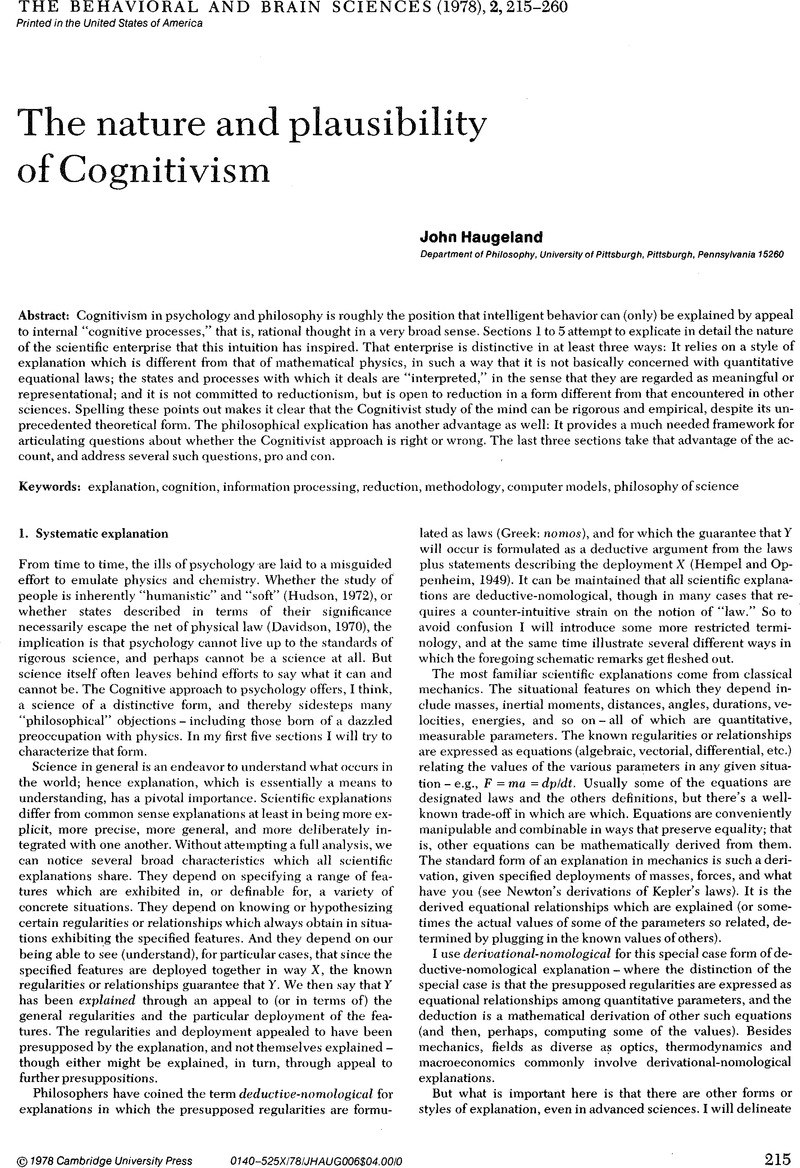No CrossRef data available.
Article contents
The two modes of identifying objects: descriptive and holistic for concrete objects; recursive and ostensive for abstract objects
Published online by Cambridge University Press: 04 February 2010
Abstract
An abstract is not available for this content so a preview has been provided. Please use the Get access link above for information on how to access this content.

Information
- Type
- Open Peer Commentary
- Information
- Copyright
- Copyright © Cambridge University Press 1978
References
REFERENCES
Mendelson, E.Introduction to Mathematical Logic. New York: Van Nostrand, 1964. Pred. 14 b.Google Scholar
van Heijenoort, J.Frege and Gödel. Cambridge, Mass.: University Press, 1970. Pred. 17.Google Scholar
von Neumann, J.Theory of Self Reproducing Automata (Burkes, A. W., ed.) Urbana: Univ. of Illinois Press, 1966.Google Scholar

